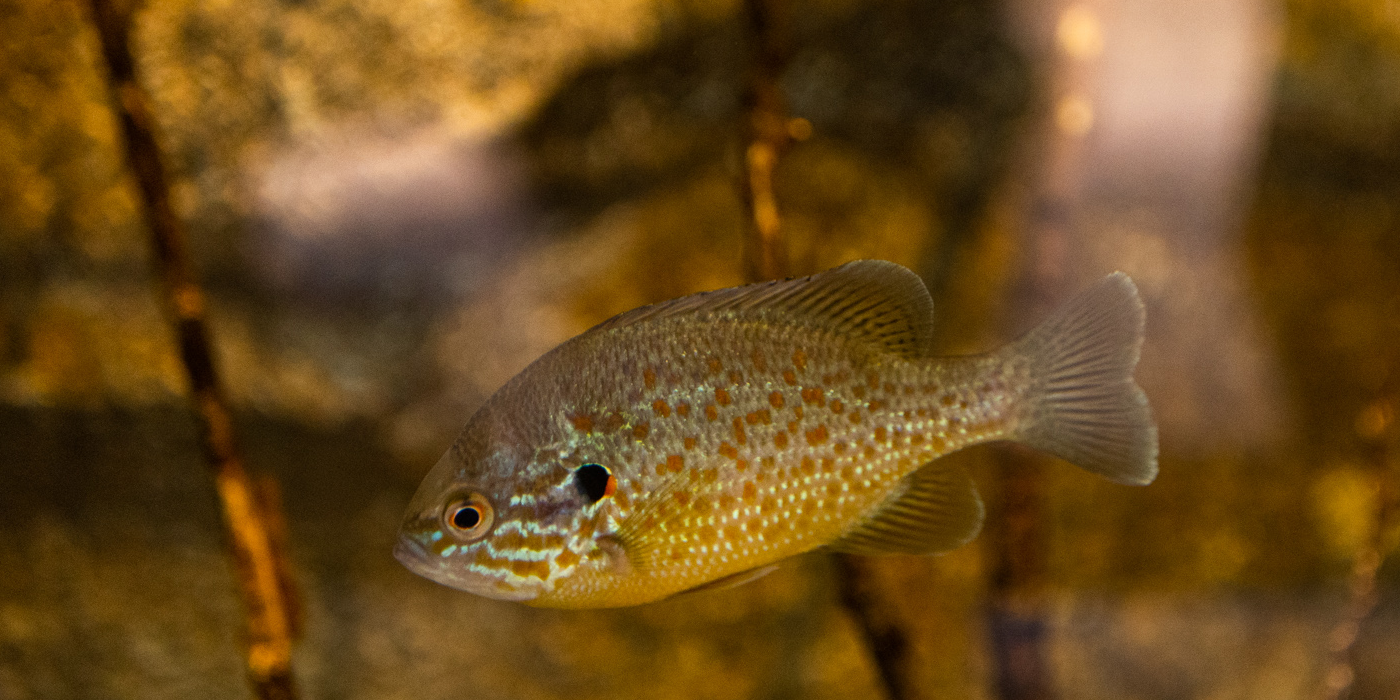Pumpkinseeds are North American freshwater fish that are very similar in appearance to their cousins, the bluegill.
Physical Description
Size
Native Habitat
Pumpkinseeds are freshwater fish that prefer warm, calm, clear water, especially in ponds, lakes and still pools in creek. They don’t venture far from the shore and tend to hide in vegetation and submerged objects. They tolerate low oxygen more easily than bluegills do, but they are more sensitive to warm water.
Pumpkinseeds live in North America, from New Brunswick, Canada, south to Georgia in the United States, and westward to the upper Mississippi basin. They also have been introduced as a game fish throughout North America and many parts of Europe.
Lifespan
Communication
Food/Eating Habits
Sleep Habits
Social Structure
Reproduction and Development
In late spring or early summer, when the temperature reaches around 55 to 82 degrees Fahrenheit (13 to 28 degrees Celsius), males begin building their nests. Pumpkinseed nests are shallow basins near the shore and are built in colonies of three to 15 nests.
Mating takes place when the pair circle the nest and release the eggs, which are fertilized externally. The father will then guard the nest. Mother pumpkinseeds can lay thousands of eggs in a year, and may lay them in more than one nest. Simultaneously, multiple females may lay their eggs in the same nest, with the same male guarding them. Males breed about every eleven days throughout the breeding season.
When the weather is warm, pumpkinseed eggs can hatch in about three days. In cooler weather, eggs may take up to 11 days to hatch. The larvae stay in the nest for about five days, relying on their yolk sack for nutrients and their father for protection. The males fan the nests with their fins to keep the water oxygenated and keep predators at bay. They may even swim out to baby fish that have wandered too far and return them back to the nest in his mouth.
When their mouths are fully developed and their fins are emerging, the young fish are ready to start feeding themselves and will leave the nest. This happens when they are 10 to 11 days old. However, they will not be full grown until they are two years old.
Conservation Efforts
Help this Species
- Reduce, reuse and recycle — in that order! Cut back on single-use goods, and find creative ways to reuse products at the end of their life cycle. Choose recycling over trash when possible.
- Organize or attend a stream, river, lake or other waterway cleanup in your area to preserve aquatic habitats for local species.
- Avoid single-use plastics, such as plastic bottles, bags and utensils. Choosing reusable options instead can help reduce plastic pollution.
- Conservation starts with you! Join a citizen science project, such as FrogWatch or Neighborhood Nestwatch, where you can help collect valuable data for scientists. Encourage your friends and family to get involved too.
- Protect local waterways by using fewer pesticides when caring for your garden or lawn. Using fertilizers sparingly, keeping storm drains free of litter and picking up after your pet can also improve watershed health.
Animal News

Leaf-tailed Gecko Treated for Skin Cancer With Chemotherapy



